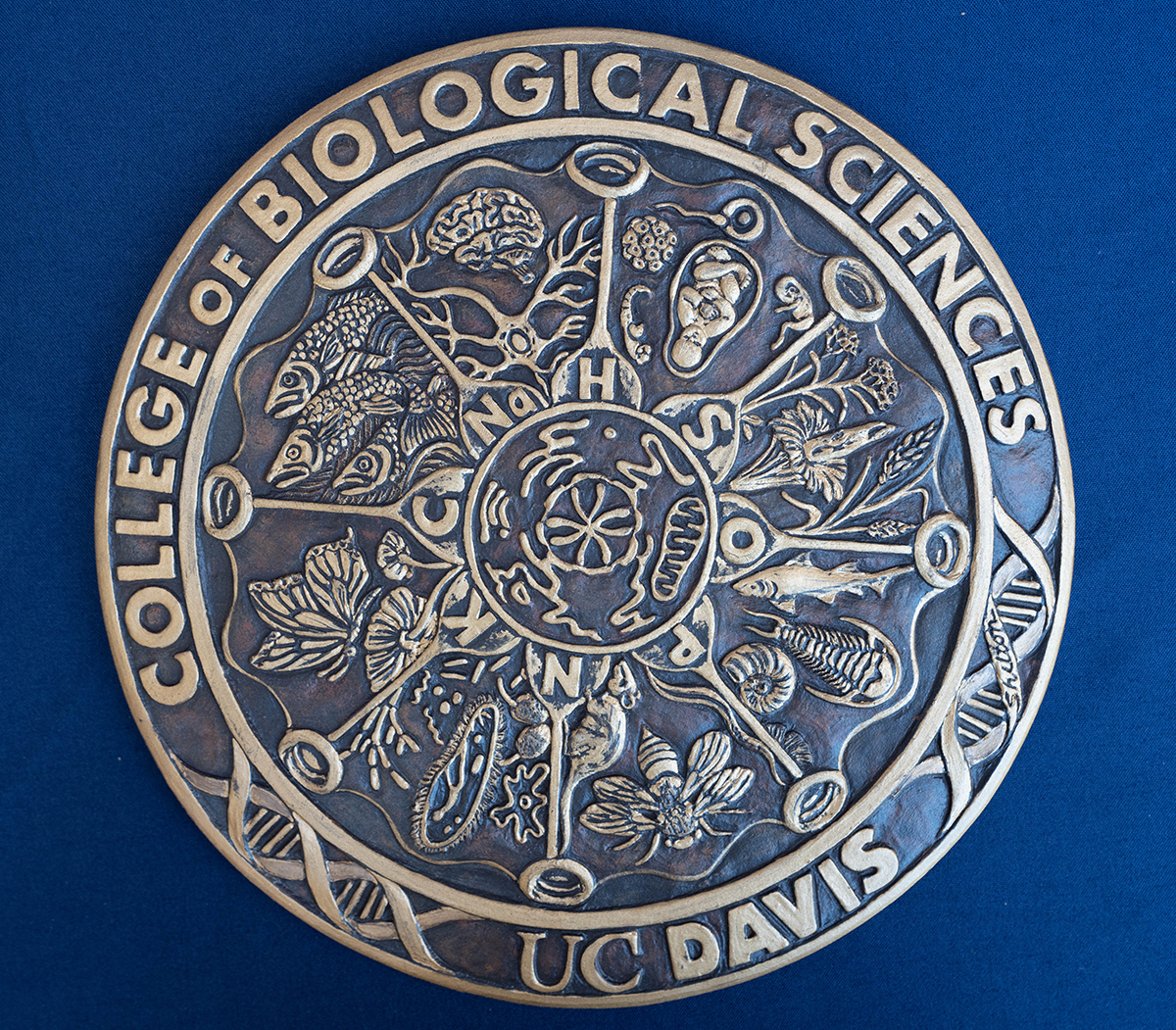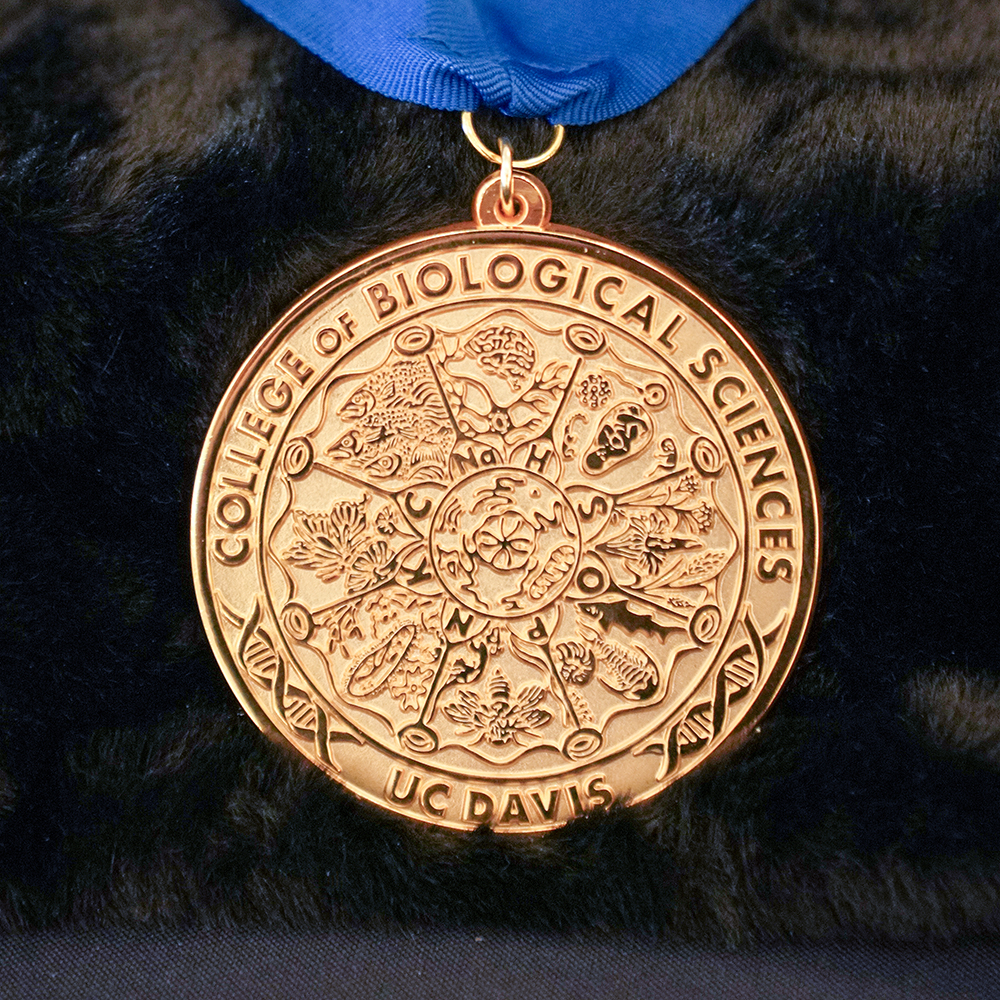A Lasting Symbol of Discovery and Excellence

Every spring, one graduating senior receives the College of Biological Sciences Medal—the highest honor our college bestows. First awarded in 2008, the medal represents not only exceptional academic achievement but also the creative and intellectual spirit that drives the life sciences at UC Davis.
When artist Susan Shelton (’80, community nutrition) was tasked with designing the original medal, she set out to create more than a piece of metal. She wanted to craft a work of art that captured the interconnectedness of biological discovery—a visual story of the disciplines and ideas that make up the College of Biological Sciences.
Inspiration from Nature and Science
Shelton drew inspiration from the work of Ernst Haeckel, a 19th-century zoologist, illustrator, and early supporter of Charles Darwin. Among his drawings of radially symmetrical organisms was an illustration that suggested the medal’s framework: the diatom—a unicellular, eukaryotic form of phytoplankton.
Diatoms are essential to research in evolution, ecology, plant biology, and microbiology. Their intricate symmetry and scientific significance made them the perfect centerpiece for a design that reflects the breadth and beauty of the biological sciences.
The Heart of the Medal
At the medal’s center is a stylized living cell, symbolizing the foundational role of cellular and molecular biology in the life sciences.
- The nucleus contains a symmetrically arranged pair of chromosomes.
- Surrounding organelles include the endoplasmic reticulum, Golgi apparatus, and mitochondrion.
- Bordering letters represent essential elements for life: carbon, oxygen, hydrogen, and nitrogen on one axis; sodium, phosphorus, sulfur, and potassium on the other.
This conceptual and visual core reflects the centrality of genetics, cell biology, and biochemistry in all areas of the college’s research and teaching.
Eight Panels, One Story
Radiating outward from the central cell are eight panels, each representing a major area of study in the biological sciences:
- Neurobiology, Physiology and Behavior: A brain and neuron.
- Reproduction and Development: Fusion of gametes and stages of human embryonic development.
- Plant Biology: Arabidopsis thaliana, Triticum aestivum (wheat), and Ted the corpse flower (Amorphophallus titanum).
- Evolution: Organisms from the fossil record, including a trilobite, cephalopod, cartilaginous fish, and ginkgo leaf.
- Model Organisms: Drosophila melanogaster, Caenorhabditis elegans, and a laboratory mouse.
- Microbiology: Paramecium, amoeba, algae, and three bacterial forms.
- Ecology and Interdependence: A butterfly pollinating a flower, illustrating mutualism.
- Marine Ecology and Perseverance: A salmon swimming upstream, symbolizing both California fisheries research and the broader cycle of life.

A Design Evolving with Time
In 2025, the CBS Medal was updated to a smaller form while preserving the original imagery and meaning of Shelton’s design. This evolution mirrors the spirit of scientific discovery itself—building on a foundation of knowledge while embracing change.
Honoring Exceptional Achievement
Each year, the College of Biological Sciences Medal is awarded to one graduating senior in recognition of outstanding academic achievement.
The medal is more than an award—it’s a reminder that science is both rigorous and beautiful, and that the pursuit of knowledge connects every discipline within the life sciences.

